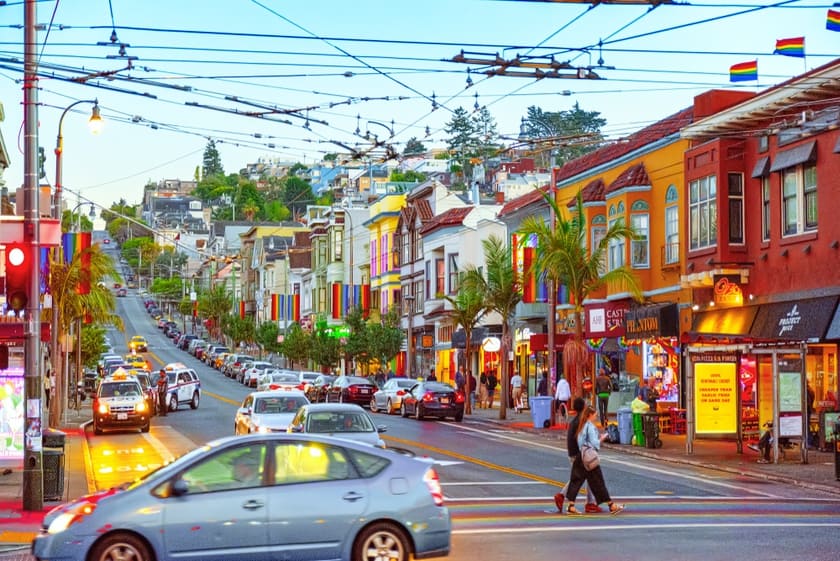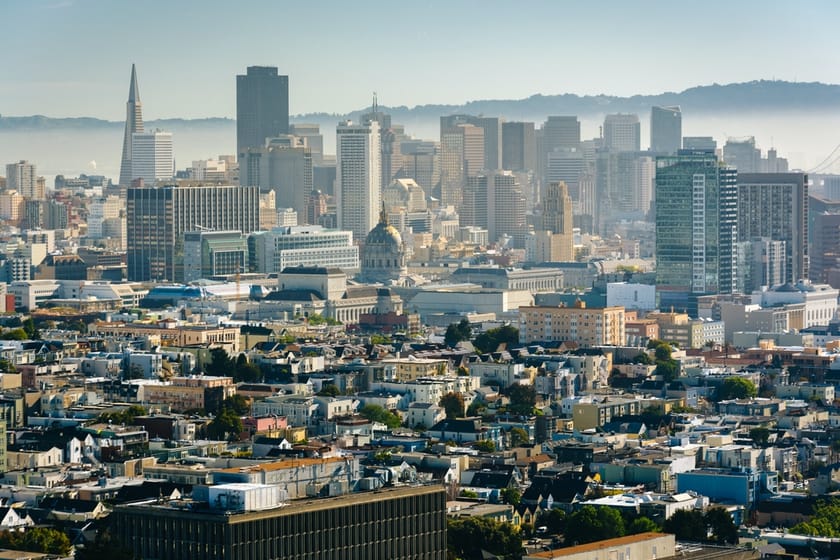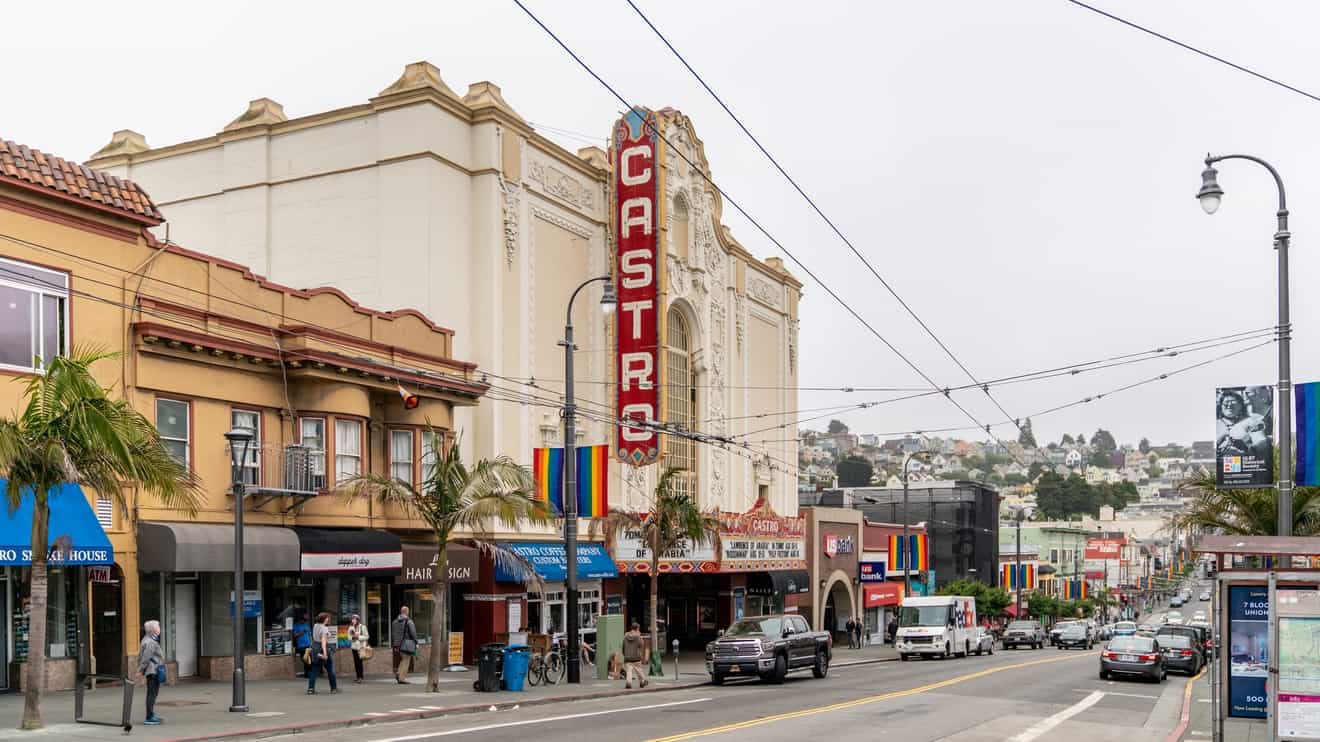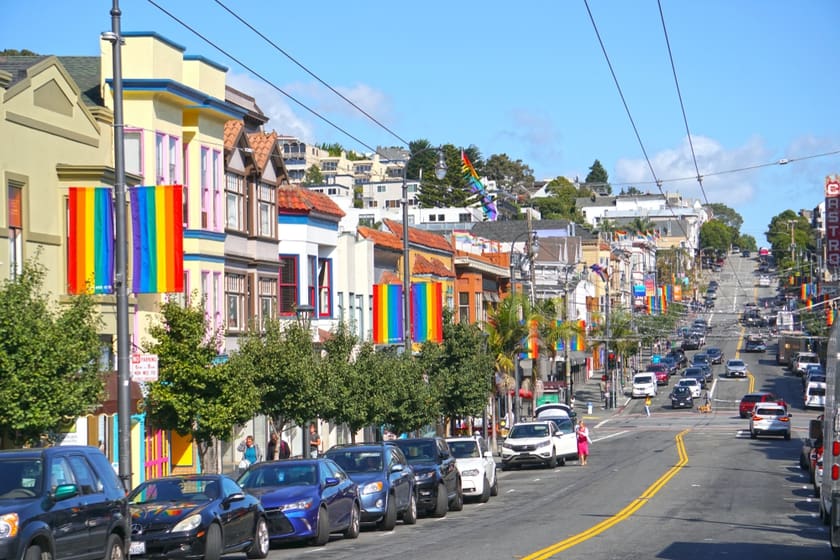Some neighborhoods of San Francisco, although they are residential, can still be of interest because of their historical significance, giving visitors the opportunity to see first hand where historical events took place that have marked (and still mark) the present.
While Haight-Ashbury is the neighborhood where hippie culture originated, the neighboring Castro has another story to tell, that of the LGBT community, where the rainbow flag, its most famous symbol, was born. Walking along the streets of the neighborhood, the rainbow is present everywhere, among flags, murals, and stripes on the street. Here is some more information for those who want to visit this area of San Francisco.
Contents
Castro San Francisco History

A number of events between 1978 and 1979 helped to make Castro known all over the world. After his election to the City Council, Harvey Milk, the first openly homosexual politician elected, asked Gilbert Baker to create a recognizable symbol of pride for the entire gay community, which would turn out to be the famous rainbow flag and it was used for the first time in the gay parade that year.
In November of the same year, Milk and Mayor George Moscone were killed in San Francisco City Hall by Dan White, then a member of the Supervisory Board. White was imprisoned for manslaughter and was sentenced to a few years in prison, sparking riots in the Civic Center and Castro known as the White Night Riots.
How to Get to Castro District
Castro is located between the Mission District and Haight Ashbury, and the heart of the neighborhood is on Castro Street, more specifically, between 17th and 18th Street. Getting there is quite easy. Just use the MUNI (lines L, M, and KT) and get off at Castro Station, which stops right in the area just mentioned.
To get more information about public transportation in San Francisco, read our guide to getting around San Francisco.
Things to Do in Castro: A Short Itinerary in the Gay District

- Harvey Milk Plaza: This is where you will find yourself once off the MUNI metro. You will immediately realize that you have arrived when you see the large rainbow flag announcing the entrance to the neighborhood.
- Where: 400 Castro St, San Francisco
- Pink Triangle Park: Cross Market Street to reach the junction with 17th Street, where you will see a small memorial dedicated to homosexual victims who had been oppressed by the Nazi regime is located. The pink triangle is the symbol with which homosexuals were identified in the concentration camps and over time has been adopted by the LGBT community itself as a symbol of protest. The marble columns symbolize the victims, while in the center of the memorial there is a triangle and a clearly visible pink gemstone that serves as a reminder of the tragic events.
- Where: 2454 Market St, San Francisco
- Twin Peaks Tavern: A historic gay club that, since 1971, has kept its large windows open and has challenged local customs.
- Where: 401 Castro St, San Francisco
- Celebratory mural for Gilbert Baker: Make a small 2-block detour (eastbound) from the main section of the neighborhood, where you will find a unique building on your right. On the 2 gates, there is a mural with the rainbow as its theme that April Berger created in 2017 in memory of Gilbert Baker. This building served as an informal meeting place for LGBT activists and as a base for the many people who suffered from AIDS between the 1980s and 1990s.
- Where: 3745 17th St, San Francisco
- Castro Theatre: It’s hard not to notice the beautiful façade of this historic building from 1922 as you walk by. Inside there are movie screenings and singalongs (screenings with the audience singing along with the screening itself).
- Where: 429 Castro St, San Francisco
- Rainbow Honor Walk: Along the sidewalk on Castro Street, you will notice portraits of people from the LGBT community who have distinguished themselves for their particular merits. This is similar to the Hollywood Walk of Fame,
- Crossroads between 18th Street and Castro Street: The intersection is easily recognizable thanks to the rainbow stripes on the street, almost as if it were marking the heart of the neighborhood.
- GLBT History Museum: A small museum with insights not only on Castro but also on the whole Bay Area.
- Where: 4127 18th St, San Francisco
- Human Rights Campaign (Castro Camera): The current headquarters of this civil rights society was once Castro Camera, where Harvey Milk worked and contributed to the cause.
- Where: 575 Castro St, San Francisco
Other Places of Interest

Outside the core area of the district, but still a short distance away, there is Corona Heights Park, a park north of Market Street. On a hill in the park, you can see a beautiful 360° view of the city. It is an excellent spot for taking pictures of the San Francisco skyline. Inside the park, you will also find the Randall Science Museum. To reach the viewpoint from the station, it takes about 15 minutes on foot.
- Where: Roosevelt Way &, Museum Way, San Francisco
Where to Stay
Although the MUNI connects Castro to the rest of the city, there are not many hotels in Castro, as you can see from this list of accommodations in the neighborhood. If for some reason you would prefer not to stay overnight in this area, my advice is to consider the other areas that are best suited for an overnight stay, which I have already mentioned in the article about the best areas to find accommodations in San Francisco.







